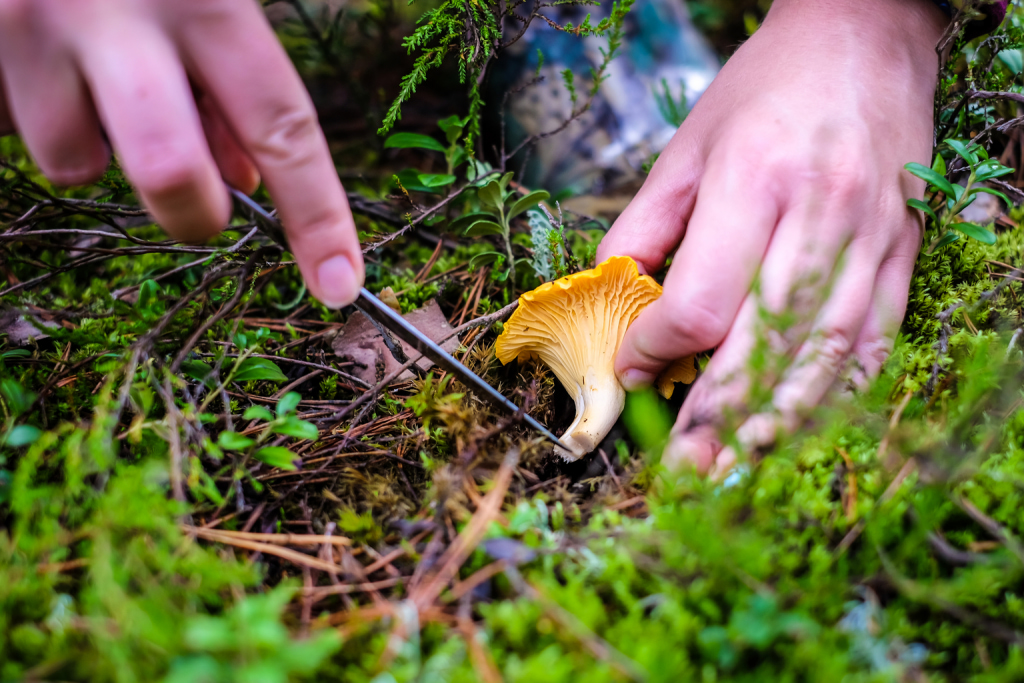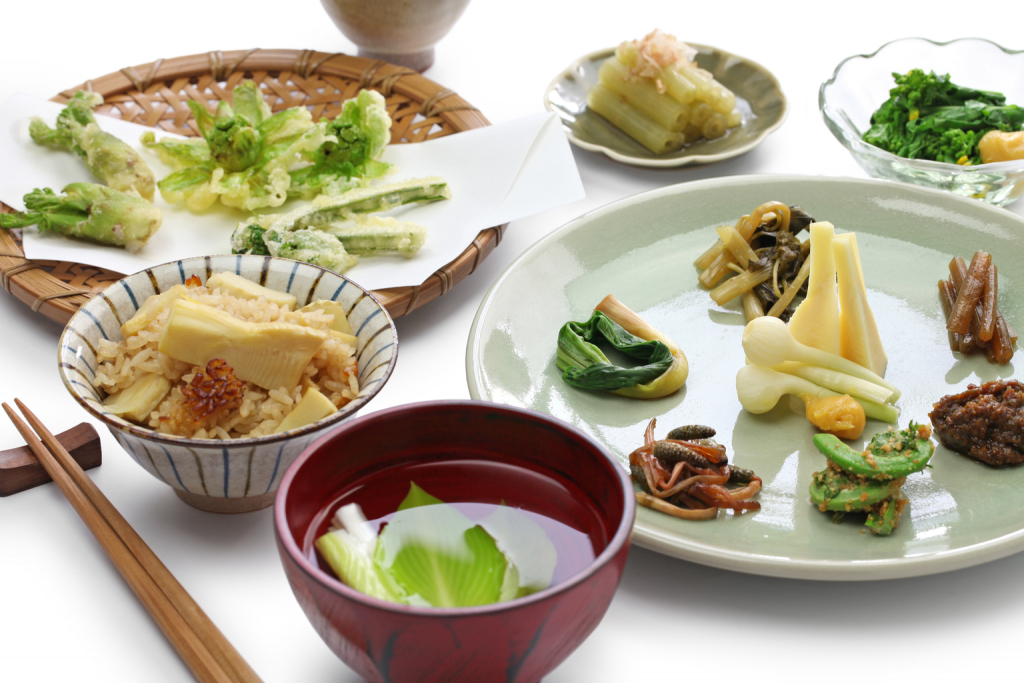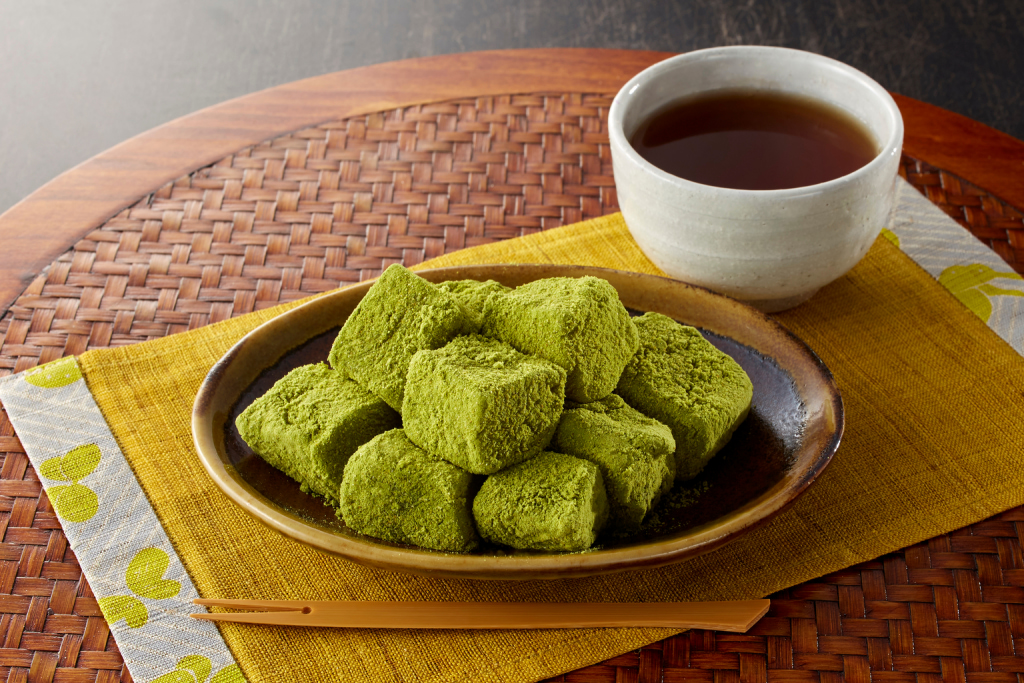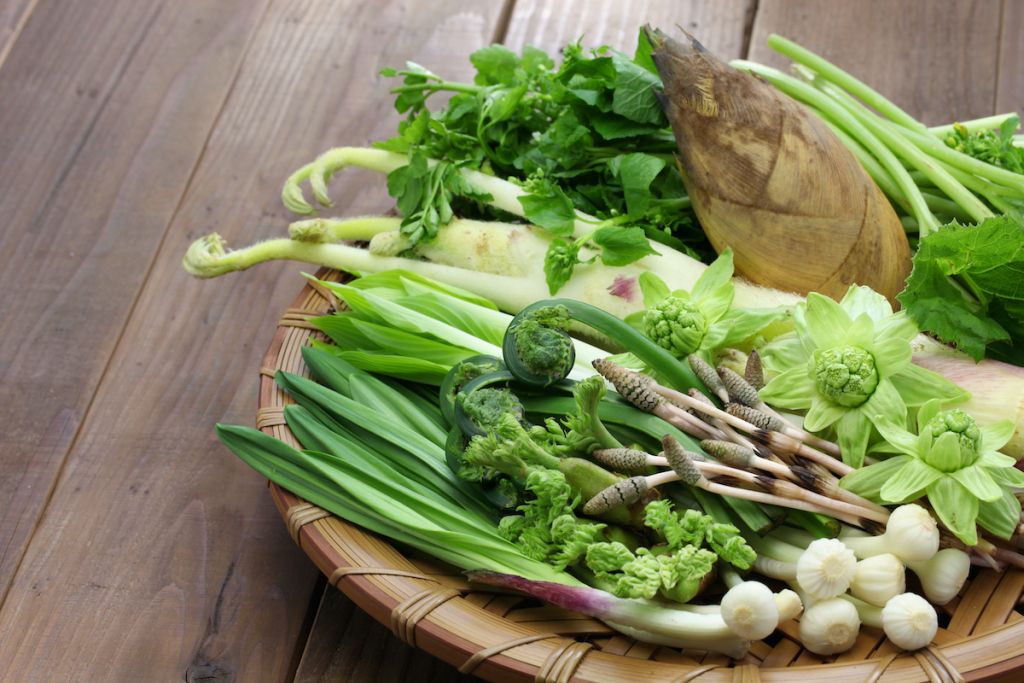Foraging is the act of finding and picking wild plants to eat. Foraging in Japan can take place in the countryside, woods, on mountains and even in cities, on abandoned parking lots or derelict residential areas.
It is well documented that Japanese people have been foraging in some form since the Neolithic Period in 10,000 BC. The Jomon civilization at the time had a diet that was made up of roughly 30 percent of foraged horse chestnuts. After that, Japanese old ladies and Ainu (Japan’s indigenous people) kept foraging alive, way before it made waves on TikTok.
When foraging, the most common types of Japanese plants to look for are varieties of sansai (mountain vegetables), seaweed and mushrooms.

In the Heian Period (794–1185), sansai gathering was seen as a noble pursuit, undertaken by aristocrats who would gather in the countryside. The term sansai generally referred to any edible plants. Fast forward to the Edo Period (1603 –1867) and sansai saved many from famine, thanks to the abundance of plants available.
Sansai are generally very bitter and some of the most common varieties are hard to eat for those not used to such bitterness. One of the most common uses of sansai in mainstream Japanese culture is in soba dishes. Mushrooms and seaweed are often used for flavoring.
Foraging is dependent on the seasons, with each period bringing about its own range of delicious plants and herbs. From bamboo grass in spring and berries in summer to mushrooms in fall, foraging is a fantastic way to connect to the seasons. Keen foragers are acutely attuned to weather changes throughout the year.
For foraging newbies, there are a few essentials to pack before heading out to a mountain or into the Japanese countryside to forage. You will need: a container for your goods, a knife or scissors (a knife is better as there is more leeway), gloves, emergency food, water and a bear bell (just in case).
Additionally, anyone heading out should do so with a local guide. Foraging is a hyper-local pursuit that can vary vastly depending on the location. Picking and eating the wrong plant could prove fatal. Below are some of the most common types of forageable Japanese wild plants and their uses.

Cooking with foraged foods
Japanese Horse-Chestnut
The Japanese horse-chestnut (tochi no ki) has played an important part in history. Its high-calorie content — more calories per 100g than rice — helped stave off famine during the Edo Period.
Easily cultivated, this tall, pale tree can be found in cities as well as the countryside, recommended for some urban foraging. Popular recipes include tempura and miso soup.
Mugwort
Mugwort (yomogi) is found all over Japan. From mountains to fields, mugwort is a sturdy plant and can thrive anywhere there is sun. Mugwort has slender leaves and a distinct aroma. In the past, mugwort was used for medicinal purposes such as aiding digestion and boosting energy. Nowadays it is more commonly found adding a green color and distinct flavor to Japanese confectionery such as yomogi mochi and other traditional rice-based sweets.
Foragers can make yomogi tempura or add it to soups and rice. Picked fresh, it can also be eaten raw.
Butterbur
The highly nutritious butterbur (fuki) is a calcium-rich perennial and a classic member of the sansai clan. Found in moist or swampy environments, often near streams or ponds, it is recognizable thanks to its large, flat leaves.
The stalks have a bitter taste and are commonly mixed with rice, or simply sautéed and eaten with salt. The buds, known as fuki-no-to, can be chopped up for butterbur miso.
Japanese Wild Radish
Japanese wild radish (hama-daikon) is found on beaches and along riverbanks in early spring. It has a delicate white and purple flower on top of its long stalks.
A common recipe for the Japanese wild radish is to fry it, after soaking it in salt to remove the bitterness.
Wild Chervil
Touted by the Japanese King of Foraging himself, Tomomichi Yamashita, wild chervil (aka cow parsley, or shiku in Japanese) is a deliciously fragrant plant used to keep digestion running smoothly. Found commonly across mountains and in woodlands, it is also known as “gastro parsley.”
Recipe-wise, it can be used in tempura and also makes a great addition to pasta dishes.

Warabi-mochi is made with bracken
Bracken
Bracken (warabi) are found across Japan in the spring, from mountainsides to woodlands. Easy to access, they have been a popular foraged food in Japan for centuries, with both the leaves and stalks edible. Traditionally they are made into warabi mochi, a dark, sweet mochi that is typically served with dark kokuto sugar. Otherwise, they can be blanched and cooked into rice, salads and stir-fries.
Other key Japanese sansai and edible plants include:
- Grassy-leaved sweet flag (sekishou)
- White nettle (odorikosou)
- Evening primrose (matsuyoigusa)
- Asian royal fern (zenmai)
- Japanese garlic (nobiru)
- Mushrooms – all types.
For city dwellers, some common edibles to be found out and about are ginkgo nuts, dandelions and ume (Japanese plum).
Happy hunting!









